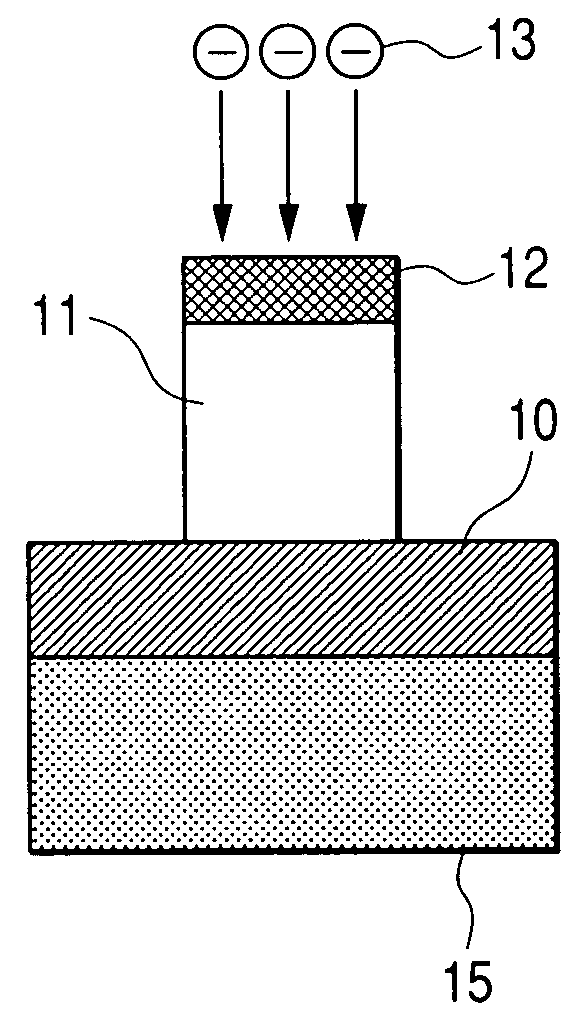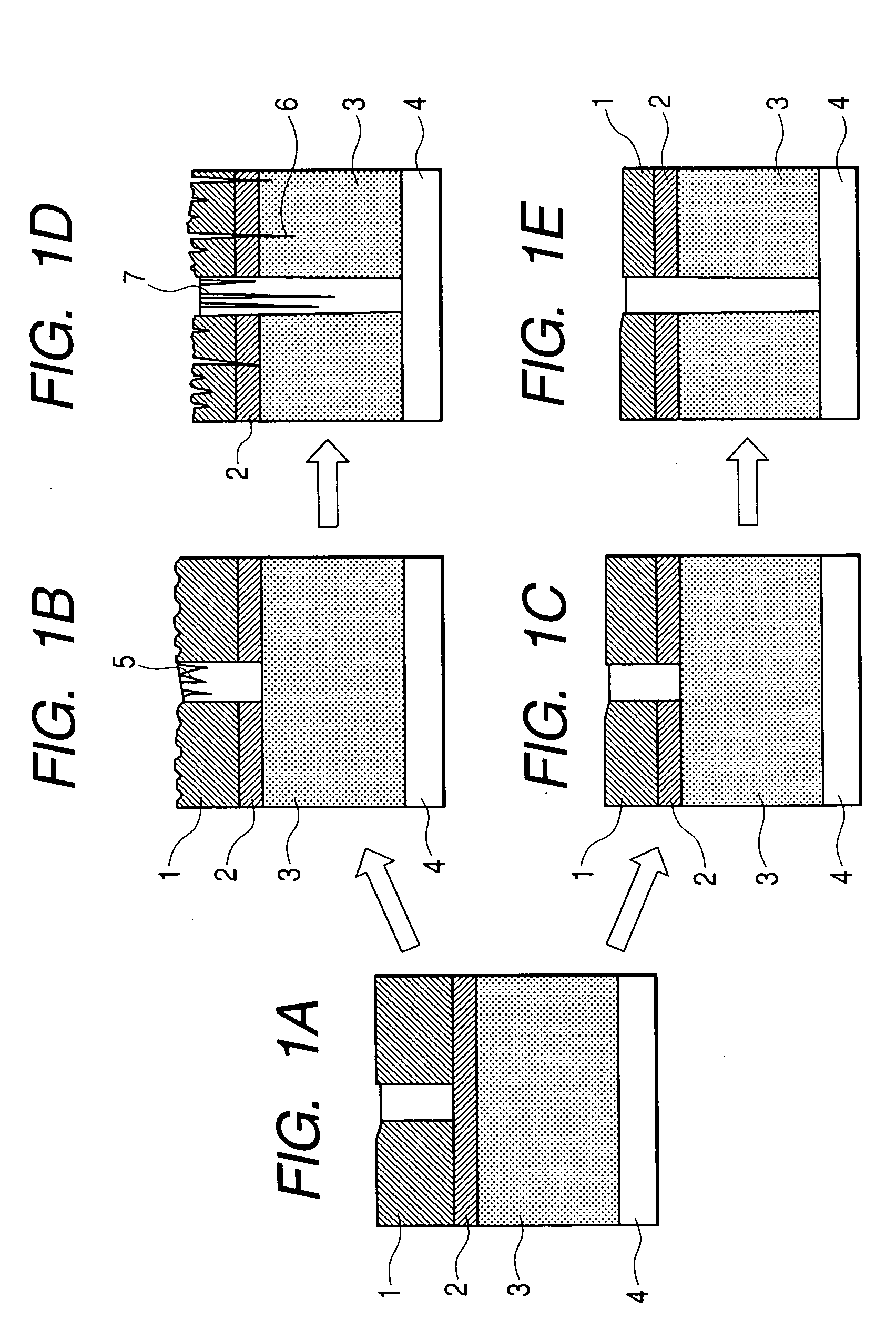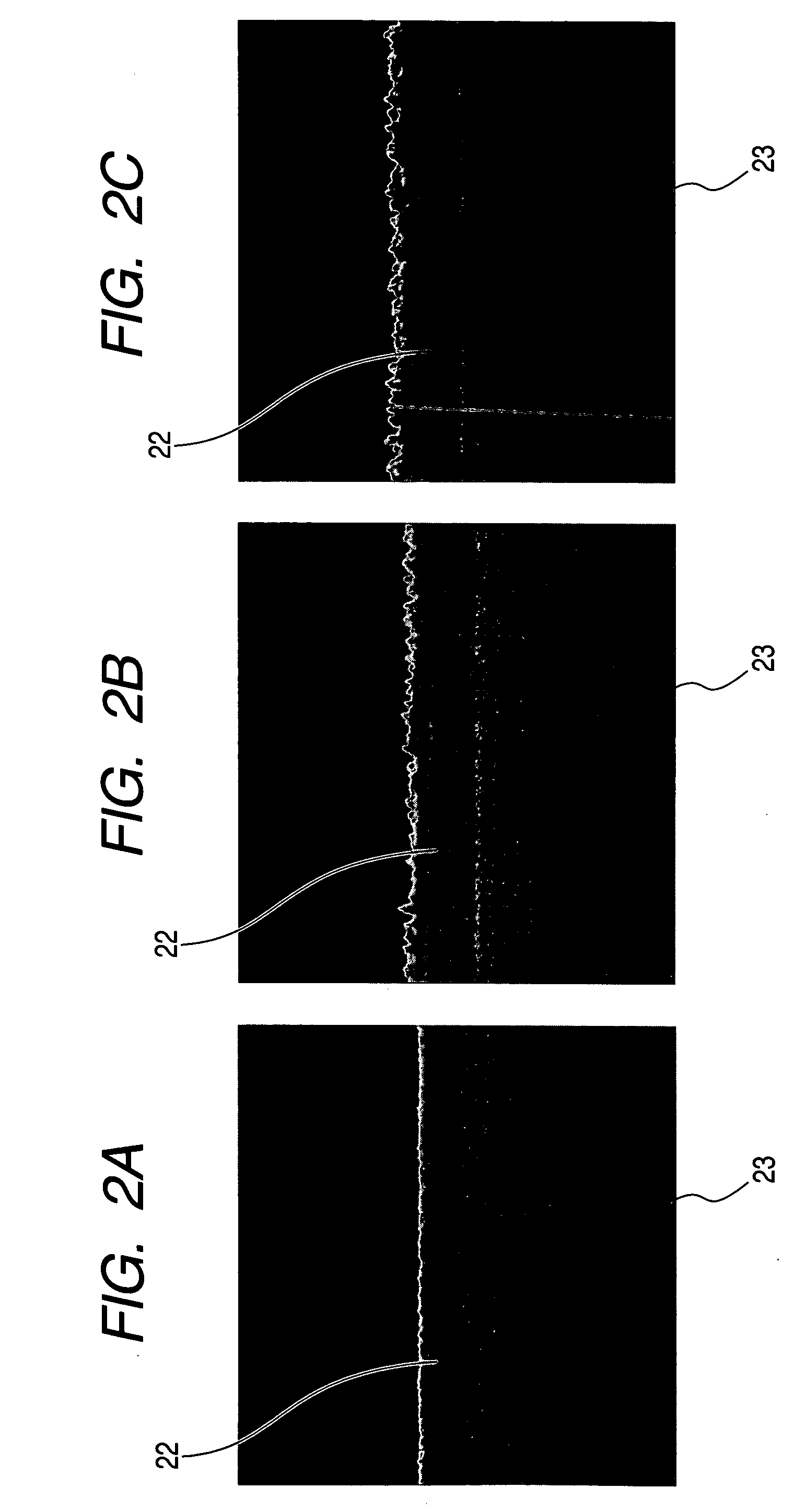Dry etching method and apparatus
a technology of dry etching and apparatus, which is applied in the direction of photomechanical apparatus, electrical apparatus, semiconductor devices, etc., can solve the problems of deterioration of line-edge roughness, larger resist etching rate, and more serious surface roughness due to resist damage, so as to reduce resistance to etching and reduce ionization energy , the effect of efficient prevention
- Summary
- Abstract
- Description
- Claims
- Application Information
AI Technical Summary
Benefits of technology
Problems solved by technology
Method used
Image
Examples
first embodiment
[0032] First Embodiment
[0033]FIGS. 1A to 1E are cross sectional views to show a process of forming contact holes using as a mask a resist pattern formed by lithography with the use of an excimer laser as a light source. FIG. 1A shows an example of a sample to which the dry etching method of the present embodiment is applied. The film structure is composed of a resist 1 applicable to ArF lithography, an organic bottom-anti-reflection-coating (BARC) 2 that suppresses an abnormal pattern formation due to interference of laser reflection, a silicon oxide film 3 that is a film to be processed, and a base silicon substrate 4. Here, the film thickness of the resist applicable to the ArF lithography was set to 350 nm, and that of the BARC was set to 60 nm. It should be noted that an open portion at the center of the resist 1 in each of FIGS. 1A to 1E shows the inner wall of the contact hole.
[0034]FIGS. 1B and 1D are cross sectional views which show the result when a conventional etching pr...
second embodiment
[0047] Second Embodiment
[0048] In this embodiment, resist modification and etching carried out in the same apparatus with the objective of reducing resist damage are exemplified. In general, resist modification is performed in a specifically designed modification apparatus, and then etching is performed in an etching apparatus. However, in the embodiment of the present invention, resist modification and etching are carried out by turns as shown by the steps of processing shown in FIGS. 5A to 5E. FIG. 5A is a cross sectional view before the processing, where an ArF resist 11, an anti-reflection coating 10, and a silicon oxide film 15 are laminated. FIGS. 5B and 5D depict resist modification cycles. A resist thickness 12 to be modified in one cycle of the resist modification is to be set larger than the resist thickness etched in the next etching cycle (FIGS. 5C and 5E). In this way, the resist surface is always modified at the time of etching, and resist damage can be reduced.
[0049]...
third embodiment
[0063] Third Embodiment
[0064] In this embodiment, a process in which the second embodiment and the first embodiment described above are combined together will be explained. First, the resist modification of the resist surface layer is carried out by using the method of the electron beam cure that was explained in conjunction with the second embodiment. In this case, the plasma gas used to generate electrons is a rare gas that does not form deposition radicals and reactive radicals. In this way, electrons are purely drawn toward the resist surface, and the resist modification effect can be enhanced. In the present embodiment, Ar was supplied at 50 ml / min, and the pressure was set to 2 Pa. During the resist modification cycle, 15,000 pulses of positive pulse bias were applied 50 msec after switching off the plasma. The electron acceleration voltage is about 100 V, and the dose amount is about 2,000° C. / cm2. The thickness of the resist modification is then about 10 to 20 nm. Subsequent...
PUM
 Login to View More
Login to View More Abstract
Description
Claims
Application Information
 Login to View More
Login to View More - R&D
- Intellectual Property
- Life Sciences
- Materials
- Tech Scout
- Unparalleled Data Quality
- Higher Quality Content
- 60% Fewer Hallucinations
Browse by: Latest US Patents, China's latest patents, Technical Efficacy Thesaurus, Application Domain, Technology Topic, Popular Technical Reports.
© 2025 PatSnap. All rights reserved.Legal|Privacy policy|Modern Slavery Act Transparency Statement|Sitemap|About US| Contact US: help@patsnap.com



